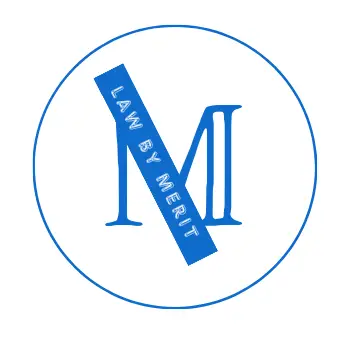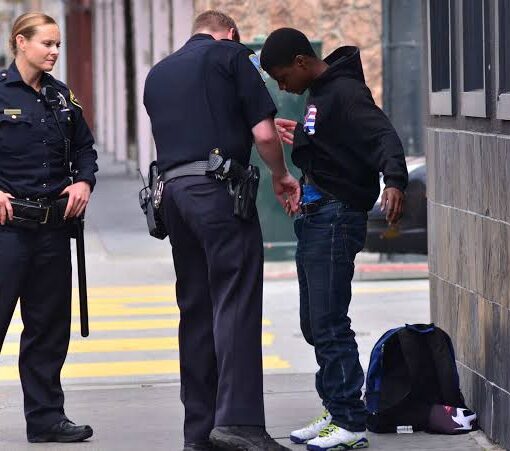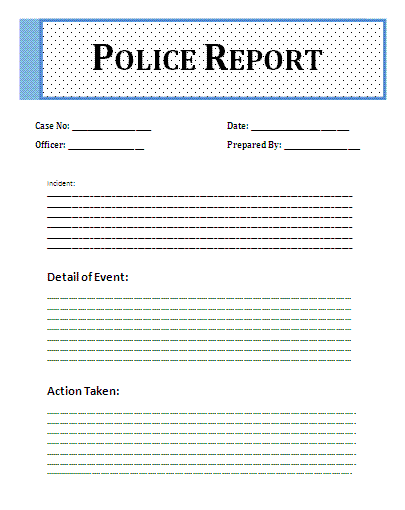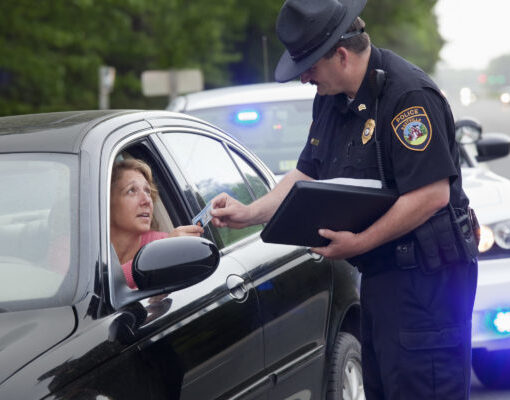Trespassing laws and regulations vary from jurisdiction to jurisdiction, and understanding whether someone can be trespassed from a public building or property requires a careful examination of legal frameworks and principles. In this overview, we will delve into the intricacies of trespassing, exploring scenarios where individuals might face trespassing restrictions on public premises.
Defining Trespassing
Trespassing generally refers to the unauthorized entry or presence on another person’s property, which can include private, public, or government-owned locations. While public property is open to the general public, there are instances where unauthorized individuals can be removed or prohibited from entering. Trespassing on public property can lead to legal consequences, but the specifics depend on the nature of the property and the circumstances.
Can You Be Trespassed from a Public Building or Property?
Yes, you can be trespassed from a public building or property under certain circumstances. Trespassing laws vary by jurisdiction, but generally, if you violate rules, engage in disruptive behavior, or pose a safety risk, you may be asked to leave and could face legal consequences if you refuse. Public properties like government buildings, parks, and libraries have the right to enforce such actions. It’s important to follow posted rules and regulations to avoid being trespassed.
Trespassing on Different Types of Public Property
1. Government Buildings and Facilities:
Government buildings, such as courthouses, legislative chambers, and administrative offices, may have stricter security measures in place due to their sensitive nature. While these locations are typically open to the public, unauthorized or disruptive behavior may result in removal or even legal action. Courts often have the authority to ban individuals from their premises if they engage in disorderly conduct or pose a threat to the proper functioning of the justice system.
2. Public Parks and Recreation Areas:
Public parks and recreational spaces are open for community enjoyment, but certain regulations might govern activities within these areas. Many parks have specific rules that prohibit activities such as camping, littering, or off-leash pets. Violating these regulations could result in a request to leave the premises or even citations.
3. Public Transportation Facilities:
Transportation hubs like train stations, airports, and bus terminals are considered public spaces, but security concerns might lead to stricter enforcement. Individuals engaging in disruptive behavior, loitering, or posing security risks might be asked to leave or face legal consequences.
4. Public Schools and Educational Institutions:
Public schools are open to students, staff, and visitors, but there are limits to this openness. Trespassing laws can come into play when unauthorized individuals attempt to enter school premises without permission. This is especially important for ensuring the safety of students and maintaining a conducive learning environment.
Legal Process for Trespassers
The process for dealing with trespassers on public property usually involves the following steps:
1. Verbal Warning : Security personnel or authorities typically issue a verbal warning, informing the individual of their violation and requesting them to leave the premises.
2. Escalation : If the individual refuses to comply, authorities might escalate the situation by involving law enforcement.
3. Legal Action : In some cases, especially when there are persistent violations or disruptive behavior, legal action such as fines or court orders might be pursued.
Trespassing on public property is a complex issue that hinges on the interplay between public access and security concerns. While public spaces are generally accessible to all, there are instances where individuals can be asked to leave or even face legal repercussions due to their actions. Regulations, security considerations, and the nature of the property all influence the decision-making process when it comes to trespassing on public buildings or property. Understanding the legal nuances in your specific jurisdiction is crucial to navigating these situations appropriately.
RELATED:
Can You Drive Using Only Your Parking Lights Legally? (And When You Can)
Can You Sue Anyone for Anything? (An In-Depth Overview)
Can a Person Who Confesses Guilty with No Evidence Be Prosecuted?
Circumstances a Person Can Be Trespassed from a Public Building or Property
Trespassing laws exist to maintain the balance between public access and the safety and security of individuals and institutions. While public buildings and properties are generally open for the public to use, there are situations in which a person can be trespassed from such places. In this segment, we will explore distinct circumstances that can lead to a person being trespassed from a public building or property, considering the legal and practical aspects of each situation.
1. Disorderly Conduct and Disturbances:
One of the most common reasons for trespassing from a public building or property is engaging in disorderly conduct or causing disturbances. Public spaces are meant to be safe and welcoming for everyone, and individuals who disrupt this environment may be asked to leave. Disorderly conduct can include behaviors such as shouting, fighting, or creating a scene that interferes with the normal functioning of the place. Authorities have the right to protect the well-being of others and maintain the peace by removing individuals who engage in disruptive behavior.
2. Violation of Posted Regulations:
Public buildings and properties often have specific rules and regulations that visitors are expected to follow. These rules are often posted visibly to inform visitors about acceptable behavior and prohibited activities. Violating these regulations, such as smoking in designated non-smoking areas, entering restricted zones, or skateboarding where it’s not allowed, can result in being trespassed. These rules are in place to ensure the safety of visitors and the preservation of the property’s integrity.
3. Security Threats and Concerns:
In situations where security is paramount, individuals may be trespassed from public buildings or property due to perceived security threats. This includes situations where someone’s behavior raises concerns about the safety of others or the security of the property itself. Suspicious activities, carrying prohibited items, or acting in a manner that suggests ill intent can lead to removal and potential trespassing. This proactive approach ensures that potential threats are dealt with promptly and effectively.
4. Refusal to Comply with Lawful Orders:
Authorities and security personnel within public buildings and properties have the responsibility to maintain order and ensure the safety of everyone present. If an individual refuses to comply with lawful orders from these personnel, they may be trespassed as a result. Ignoring instructions, such as refusing to undergo security screenings, refusing to leave when asked, or ignoring emergency evacuation procedures, can lead to being removed from the premises. This is essential for maintaining the authority of those responsible for the building’s security.
5. Repeated Trespassing and Bans:
When an individual repeatedly trespasses on a public building or property, even after being warned or removed, they may face stricter consequences, including bans from the premises. Repeat offenses suggest a willful disregard for rules and regulations, potentially posing a threat to the safety and order of the location. Authorities may decide to impose longer-term bans or even legal actions to prevent such individuals from accessing the property in the future. This approach is necessary to protect the interests and safety of the broader community.
6. Criminal Activity:
Engaging in criminal activity within a public building or property is a clear reason for being trespassed. Activities such as theft, vandalism, drug-related offenses, or any other illegal actions not only violate the law but also jeopardize the safety and well-being of others using the space. Authorities have the duty to maintain a secure environment, and individuals involved in criminal behavior can be removed and potentially banned from the premises to prevent further criminal acts.
7. Disruption of Scheduled Events:
Public buildings and properties often host various events, meetings, or gatherings that require a peaceful and organized atmosphere. Disrupting scheduled events by causing disturbances, interfering with the proceedings, or preventing others from participating can lead to immediate removal and trespassing. These disruptions hinder the purpose of the event and negatively impact the experience of those attending.
8. Non-Compliance with Health and Safety Measures:
In situations where public health and safety are paramount, such as during a pandemic, non-compliance with health and safety measures can result in trespassing. Refusing to follow guidelines such as wearing masks, maintaining social distancing, or adhering to other health-related protocols can lead to removal from the premises. These measures are in place to protect the well-being of all individuals present and ensure a safe environment.
9. Harassment and Threats:
Harassment and making threats against others within a public building or property are serious offenses that can lead to immediate trespassing. Such behavior creates an unsafe and uncomfortable atmosphere for those present and goes against the principles of respectful and civil interaction. Individuals who engage in harassment or threats may be removed to ensure the safety and well-being of others.
10. Unauthorized Access to Restricted Areas:
Public buildings and properties often have restricted or sensitive areas that are off-limits to the general public. Unauthorized access to these areas can result in trespassing. Whether intentional or accidental, entering restricted zones without proper authorization can lead to removal from the premises. These restrictions are in place to protect sensitive information, equipment, or personnel within the property.
The circumstances that can lead to a person being trespassed from a public building or property are diverse and multifaceted, with the common goal of maintaining safety, security, and order. Engaging in criminal activities, disrupting events, refusing to comply with health measures, harassment, threats, and unauthorized access to restricted areas are all actions that can result in removal from the premises. Adhering to rules and guidelines within public spaces not only ensures personal safety but also contributes to a positive and inclusive environment for everyone.
Last updated on: April 23, 2024





One thought on “Can You Be Trespassed from a Public Building or Property? Here’s What You Need To Know”
What if posted rules are clearly unconstitutional?
ie. No blacks allowed
Or: No photos of employees
Or: No praying is allowed